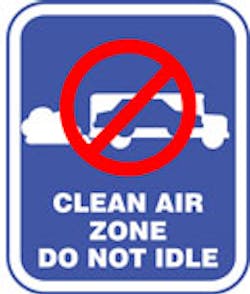A study sponsored by the U.S. Environmental Protection Agency found that idle reduction technologies for trucks can cut idling up to 78%, but that ROI from fuel and maintenance savings are “generally longer than anticipated,” according to the American Transportation Research Institute (ATRI). The non-profit research group, associated with the American Trucking Assns., conducted the study with the help of three fleets, evaluating auxiliary power units (APUs) and two air-conditioning systems utilizing battery power and thermal storage.
The study found the APUs and engine-off AC systems brought engine idling down to between 5 and 22% of total operating time. That represented a reduction of 42 to 78% compared to baseline idling numbers, ATRI reported. Idling was found to be highest during the coldest and hottest months, “which many imply the selected technologies were less effective during extreme temperatures,” according to the group.
ATRI estimated annual emissions reductions from the technologies to be more than 27 tons of nitrogen oxides (NOx), 0.6 tons of particulate matter (PM), and 1,265 tons of carbon dioxide (CO2) for the 324 trucks included in the study.
Without specifying technologies, ATRI said that payback ranged from 16 to 45 months for some units, while others “were not expected to provide a payback within the period of ownership.” It also pointed out that its ROI findings were based on “the level of baseline idling, the usage of the technology, and the start-up and ongoing costs.”
“This research captures some of the real-world challenges motor carriers face when deploying idle reduction technologies,” said Frank Molodecki, VP of safety and revenue for Diversified Transfer and Storage, one of the participating fleets. “It highlights the benefits provided by the various systems, yet identifies many of the uncertainties or areas where improvements could be made."
Among the study’s suggestions for improving idle-technology performance or cutting installation cost were better cab insulation, standardizing components and connections, coordinating engine and idle-system use, and developing better system management tools.
Diversified Transfer and a second fleet – LTL carrier NFI – evaluated APUs for the ATRI study. Schneider National collected data on the battery-powered and thermal-storage AC systems tested.
About the Author
Jim Mele
Jim Mele is a former longtime editor-in-chief of FleetOwner. He joined the magazine in 1986 and served as chief editor from 1999 to 2017.
